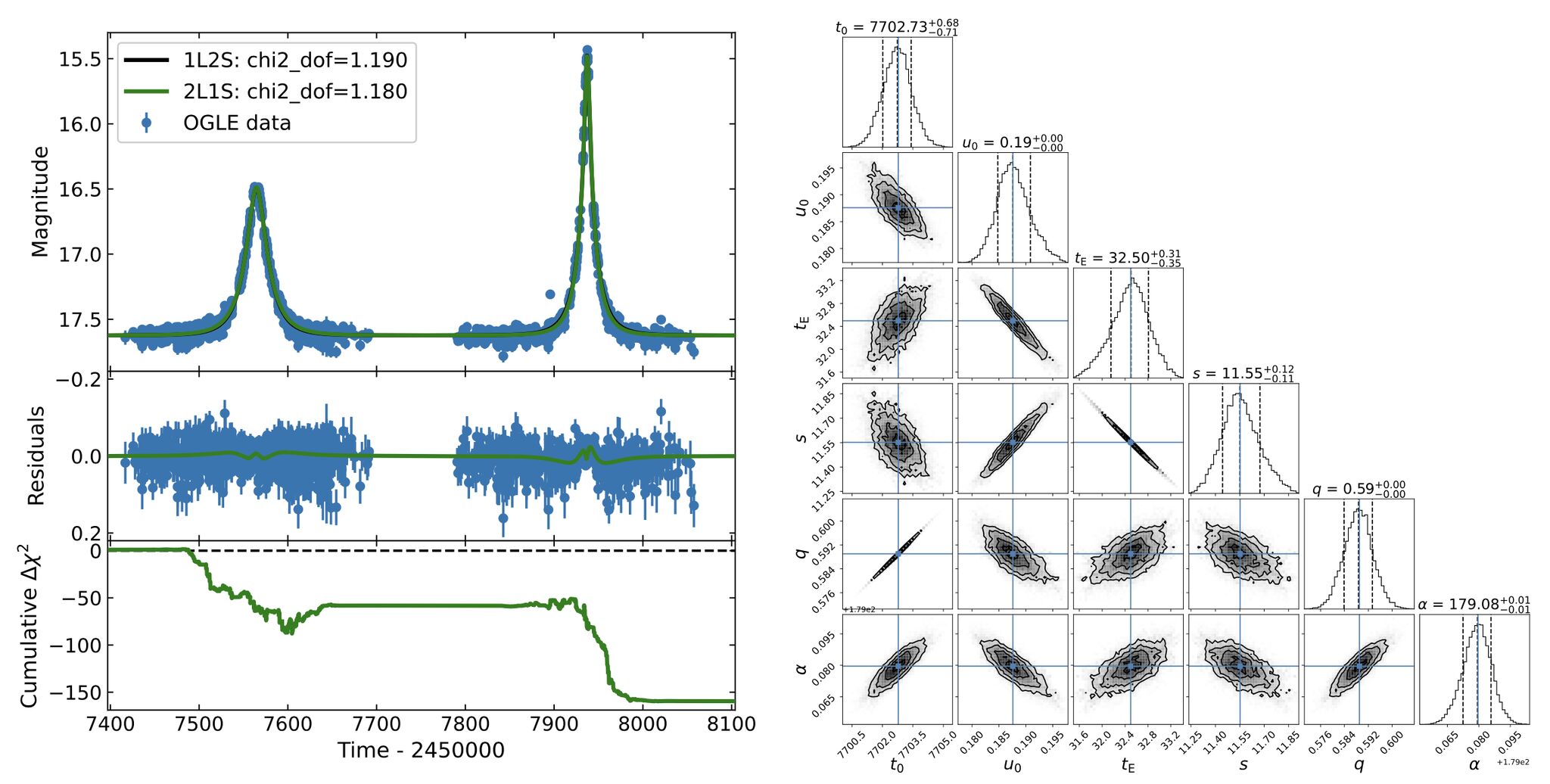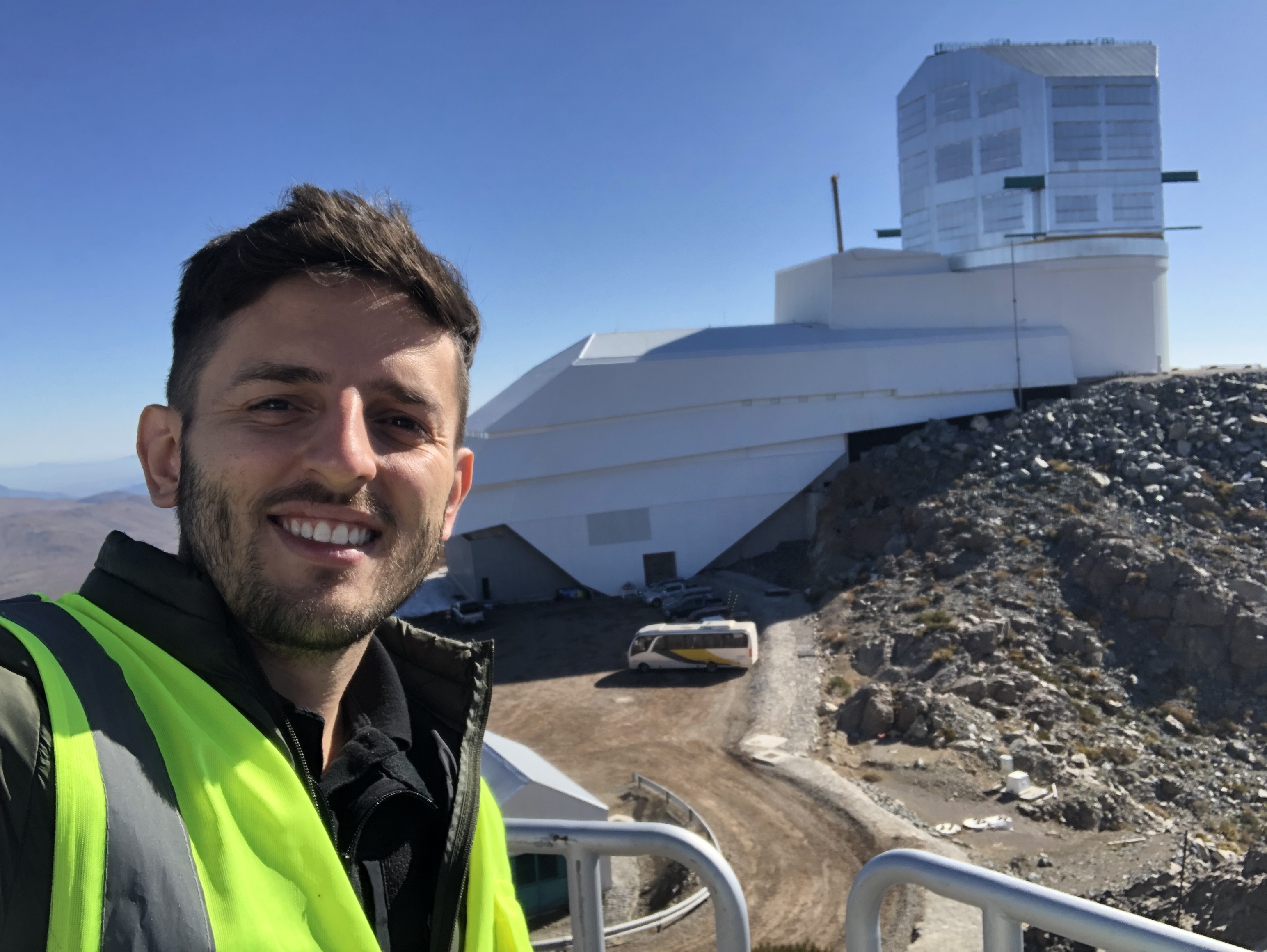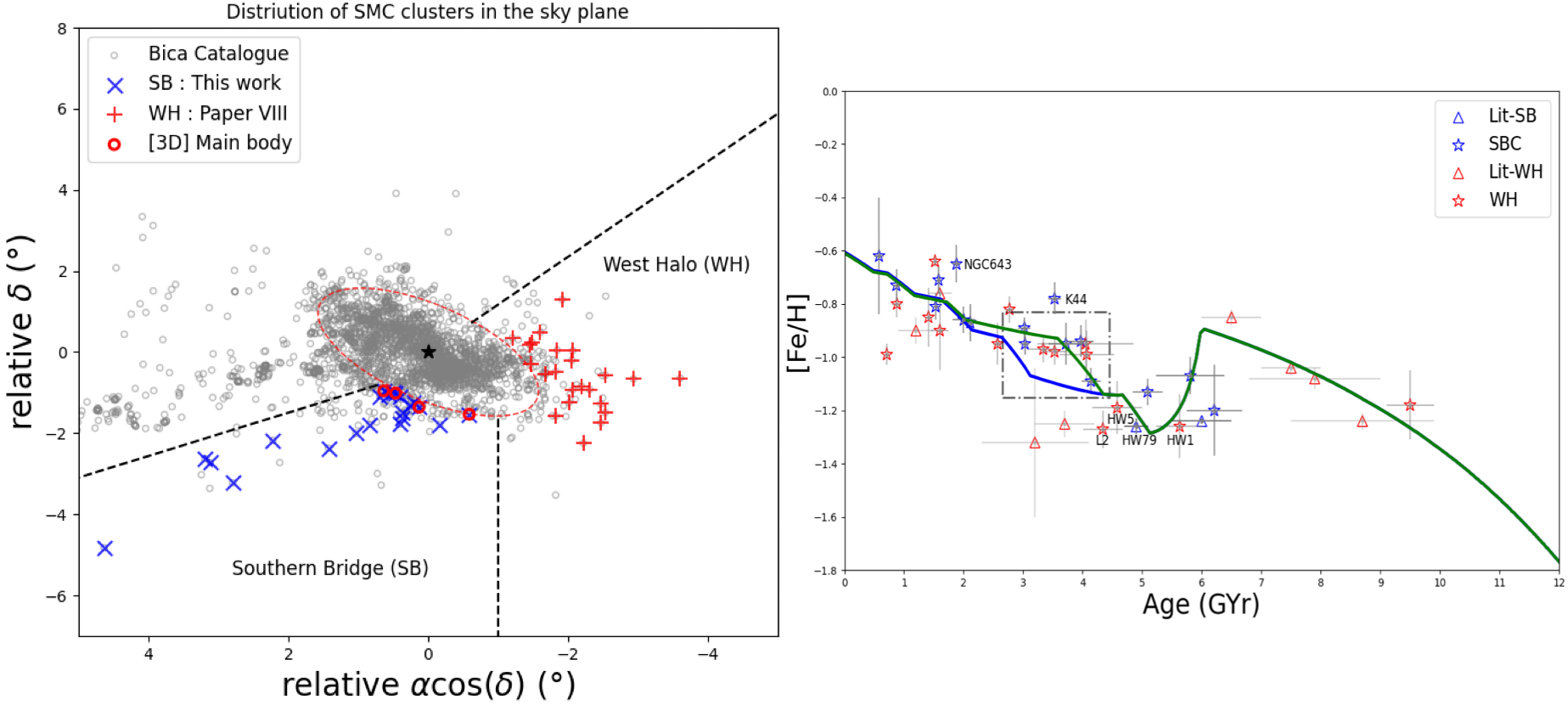
Automated Detection and Modeling of Binary Microlensing Events in OGLE-IV data. I. Events with Well-Separated Bumps
Oliveira, Poleski, Mróz et al., 2025, AcA, 75, 27

My current position involves studying binary stars in the Milky Way bulge using gravitational microlensing, which occurs when a foreground object passes at a close angle to a background star, causing a temporary magnification. Scanning 400 million OGLE-IV light curves, we aim to detect binary-lens and binary-source events, in order to constrain the bulge initial mass function from binary stars.
Recently, we published Oliveira et al. (2025, AcA) with an initial sample of 107 binary microlensing events with well-separated bumps, including model fitting with MulensModel.
Research interests: gravitational microlensing, star clusters, statistical methods, and stellar populations. My other first-author papers analyse star clusters in the Magellanic Bridge with VISCACHA data (2023), distances to bulge globular clusters from RR Lyrae stars (2022), multiple populations in bulge globular clusters (2020), and new embedded clusters in the Carina complex (2018). Member of the VISCACHA survey, Rubin Observatory - Brazilian Participation Group, MOSAIC-ELT instrumentation group, VISCACHA-DELVE joint project (Leader), and Roman Science Collaboration.

Oliveira, Poleski, Mróz et al., 2025, AcA, 75, 27

Saroon, Dias, Tsujimoto et al., 2025, A&A, 701, 222